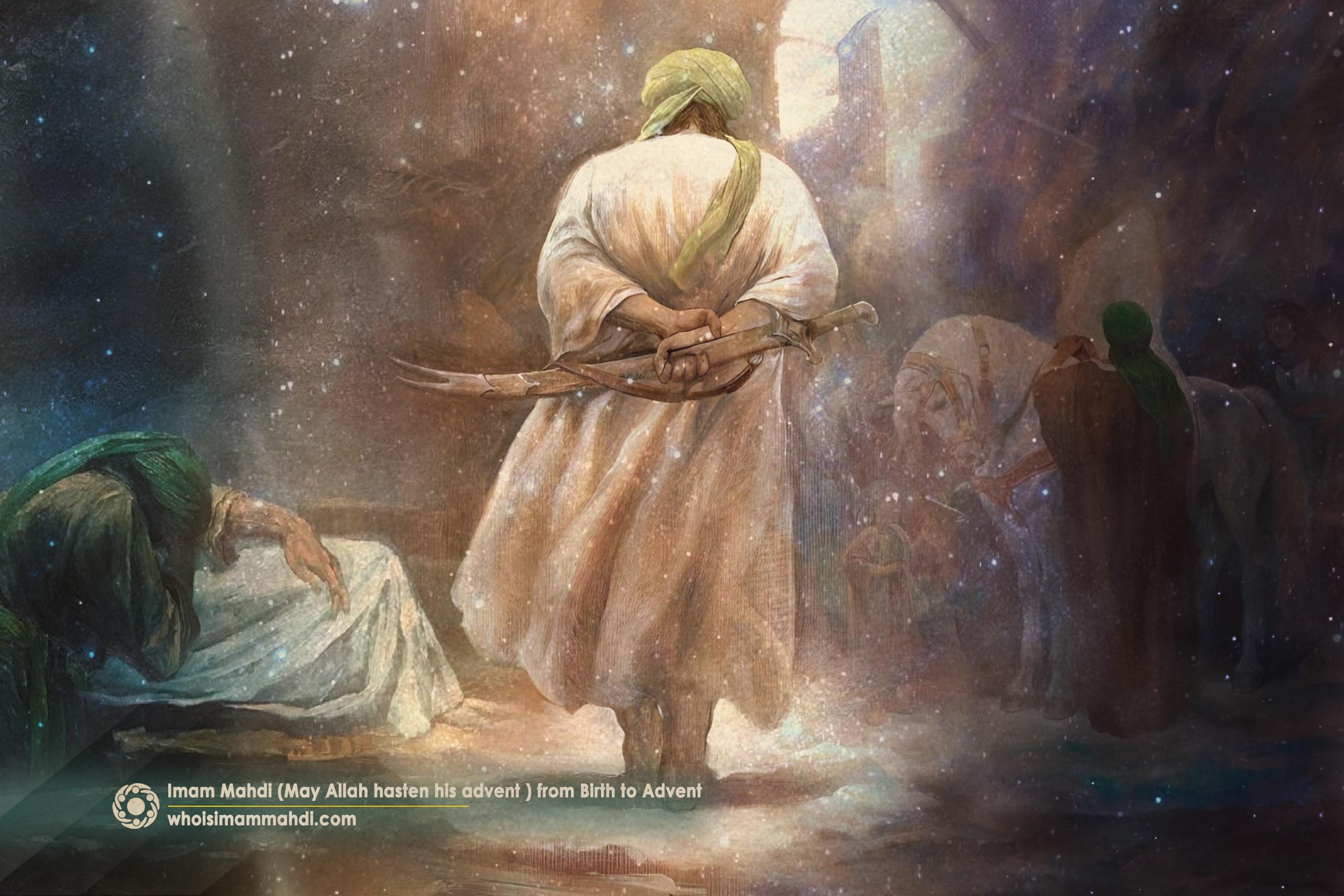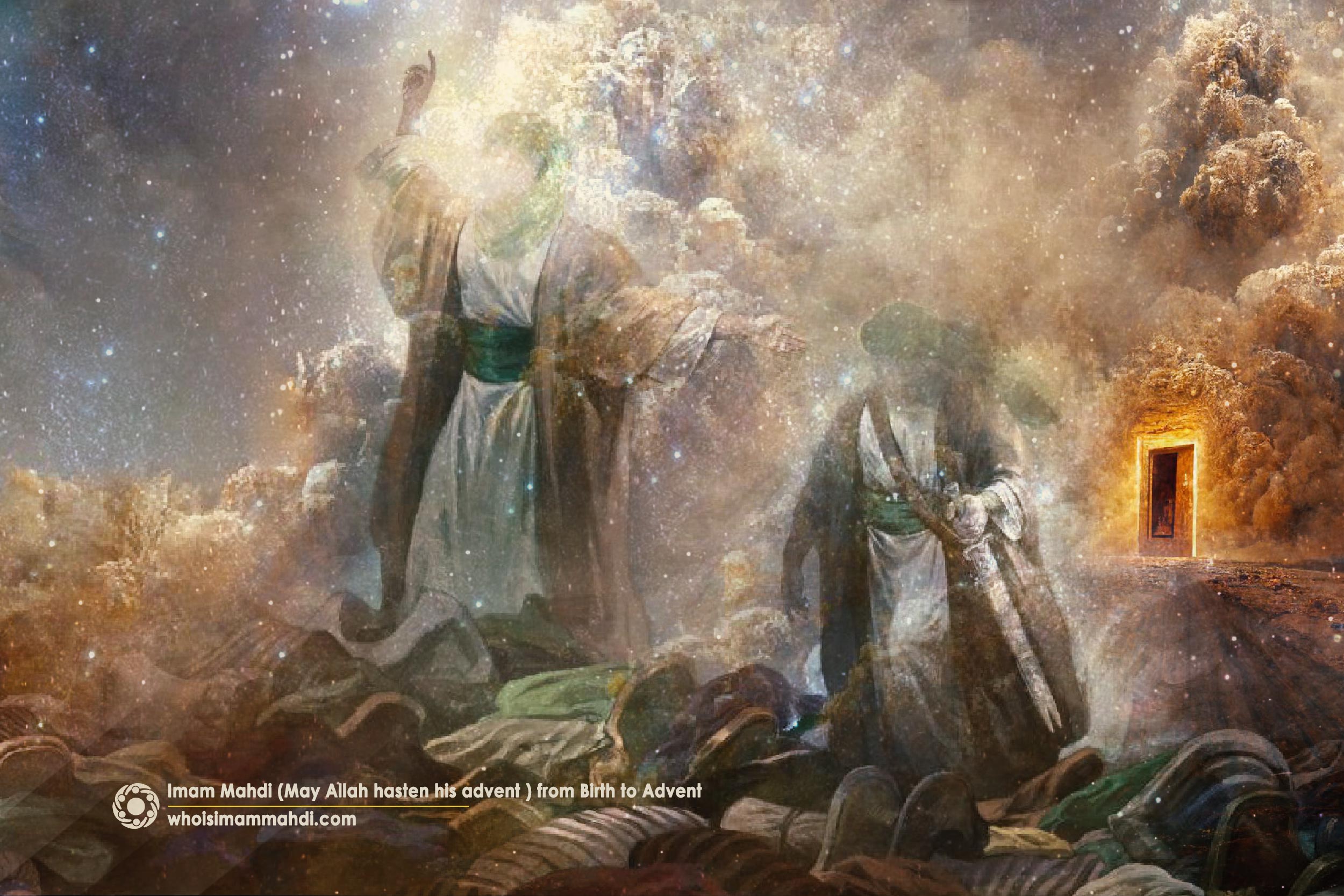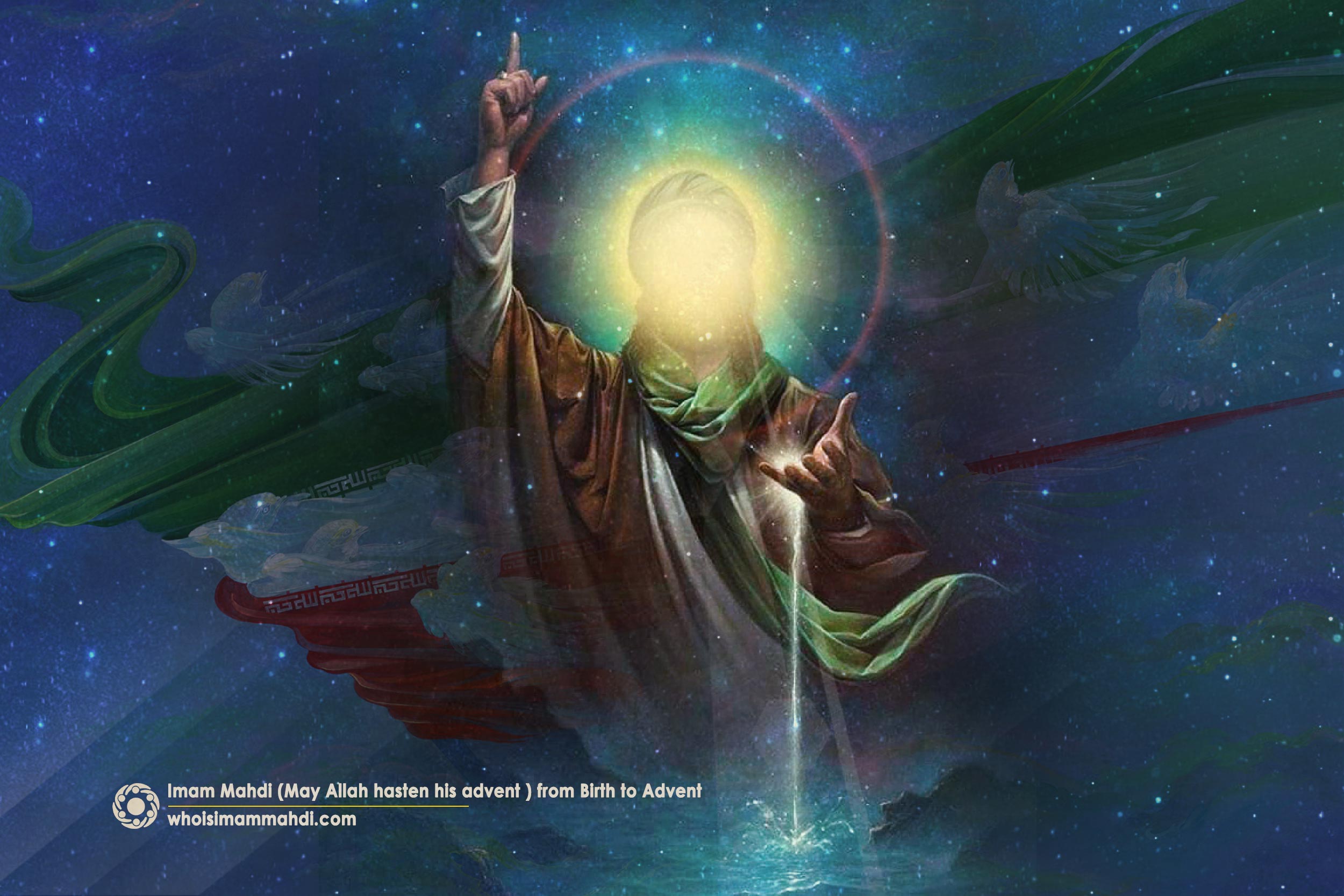Imam Kazim’s (PBUH) Political Life and His Role in the Divine Civilization
Imam Musa ibn Ja’far (PBUH), also known as Imam Kazim, was the seventh Imam of the Twelver Shia and the son of Imam Sadiq (PBUH). He was born on Safar 7th, 128 AH, in a place called Al-Abwa.[1] His thirty-five years as an Imam overlapped with the reigns of the Abbasid caliphs Mansur, Hadi, Mahdi, and Harun al-Rashid. During this time, the Abbasid government was very powerful, and it created many challenges for the Imam.
The Imam was in Abbasid prisons for about four or five years.[2] This included a short time during al-Mahdi al-Abbasi’s rule, but most of it was under Harun al-Rashid. Harun first sent the Imam to Basra, Iraq, where he was imprisoned for a while before being exiled to Baghdad.
Although some of Imam Kazim’s (PBUH) close followers knew who he was, in his will, Imam Sadiq (PBUH) had to keep the name of the Imam coming after him secret because of the severe restrictions of the Abbasids.[3] This caused confusion among Shia Muslims and made it hard to identify the next infallible Imam. During Imam Sadiq’s time, there were already signs of division among the Shia. After Imam Sadiq’s martyrdom and the start of Imam Kazim’s (PBUH) leadership, such different groups as the Ismailis, Tawussites,[4] and Fatahiyya emerged, and some even believed in the Imamate of Muhammad al-Dibaj, Imam Sadiq’s son.
Each Shia Imam (PBUT) was responsible for maintaining the Shia school. Not only did each Imam had to safeguard Shia Islam, but they also needed to adapt and develop it according to the circumstances of their time, ensuring it was correctly handed down to the next Imam. As a matter of fact, over 250 years, the first eleven Shia Imams worked to maintain and develop the Shia school and its followers, preparing everything for the twelfth Imam, Imam Mahdi (AJ). That is to say, all the eleven Imams helped set the stage for Imam Mahdi’s Imamate and rule.
Imam Kazim’s Strategies for Resistance During His Imamate
Before Imam Kazim (PBUH) decided what actions to take during his Imamate, he needed to choose his resistance strategies. He adopted two main strategies: “network” and taqiyya. These methods were meant to weaken the Abbasid Caliphate and help build a strong foundation for a divine civilization.
Taqiyya
The Abbasids were extremely afraid of Imam Kazim (PBUH) and had put him under scrutiny and tight restrictions. They were watching closely for the slightest hint of rebellion from the Imam, so that they could take action against him and finally relax. The Imam had to avoid military action and public uprisings to keep the Shia safe so that they could get ready for continuing the work of forming a divine civilization with the next Imam.
Imam Kazim (PBUH) saw taqiyya as the right approach for his time and encouraged his followers to practice it. Taqiyya does not mean giving up or avoiding action; it rather allows for carrying out tasks safely without harming oneself or the objectives.[5]
The Imam needed to protect and develop the Shia school of thought, and taqiyya was the best method for this. It was not a sign of weakness but a crucial way to ensure the survival of the Shia community. By using this strategy, Imam Kazim could advance his objectives effectively.
It is also important to note that Imam Kazim’s use of taqiyya was not because he was weak. He actively challenged the Abbasids, like when he exposed their false claims of having ties of kinship with Prophet Muhammad (PBUH),[6] and spoke out about the unfair seizure of Fadak. His use of taqiyya was about strategically resisting the Abbasids, not staying silent about injustice. He openly spoke about the right to Imamate that had been taken from the progeny of the Prophet (PBUT) and demanded their rightful claim. Imam Kazim’s (PBUH) use of taqiyya was focused on resisting and being organized against the Abbasids, not on staying silent about injustice.
Systematic Delegation
The term “Systematic Delegation” or “Network of Delegation” refers to a group led by the infallible Imam, consisting of his most skilled, pure, and loyal companions. This group worked together under the Imam’s leadership to create a well-organized network.
Members of this network were responsible for such various tasks in their areas as explaining the concept of imamate, managing financial matters, collecting and handling religious donations, teaching religious principles, answering religious and ethical questions, exposing the injustice of the ruling government, guiding people through crises, and communicating messages between the Imam and the people. People in each area contacted their own delegate because meeting the Imam in person was too dangerous.
Although the foundation of a Shia systematic network was laid during Imam Ali’s (PBUH) time, its form, level of activity, and size varied depending on the conditions of each period. For example, the network was weaker during Imam Sajjad’s (PBUH) time compared to Imam Baqir’s and Imam Sadiq’s times. It grew significantly during this period under the Imams’ leadership and became even stronger in later years. Imam Kazim (PBUH) continued to develop this network just like his ancestors did. Imam Kazim (PBUH) appointed his delegates in different regions. One of the most impressive things about his network was that it even reached the Abbasid court. Ali ibn Yaqteen, a trusted student of Imam Kazim (PBUH), followed his advice and became a minister under Harun al-Rashid. The Imam placed him there to protect the Shia, improve their social and financial status, gather secret information about the government, and counter the Abbasids’ plots. Ali ibn Yaqteen, like a loyal soldier, worked in the court to serve the Imam and became a strong support for the Shia. Other delegates of the Imam were also sent to various cities, where they were entrusted with carrying out all matters related to the Imam in those regions. These delegates would directly communicate with the Imam in safe, low-risk situations. During more sensitive times, they would send messages or letters to stay in touch and receive guidance from Imam Kazim (PBUH). Some of these key delegates were Mufaddal ibn Umar Jufi, Abdulrahman ibn al-Hajjaj, Abdullah ibn Jundub, and Yunus ibn Yaqub. Sadly, after Imam Kazim (PBUH) was martyred, many members of the network went off course and caused problems for the next Imam, Imam Reza (PBUH). Through his network, Imam Kazim (PBUH) successfully protected the Shia school from definite destruction, nurturing and strengthening it like a dedicated gardener.
Imam Kazim’s (PBUH) Key Resistance Strategies During His Imamate
During his Imamate, Imam Kazim (PBUH) worked on multiple goals at the same time. He set the foundation for different fields, such as scientific and economic ones, supported freedom movements, and fought against misguided sects.
Establishing Cultural and Academic Resistance Bases
Imam Kazim (PBUH) turned Medina into a center for his educational and cultural work. Earlier Imams had started this, but Imam Kazim (PBUH) expanded and strengthened it. Despite the tough conditions of his time, he trained hundreds of scholars in areas like Quranic interpretation, Kalam,[7] and Islamic law. Shaykh Tusi, in his book Rijal, mentions 272 students.[8] These figures represent only the most exceptional students, with notable figures like Muhammad ibn Abi Umayr, Yunus ibn Abd al-Rahman, Safwan ibn Yahya al-Bajali, and Ali ibn Ja’far among them.
Building an Economic Resistance Base
Harun al-Rashid was one of the richest Abbasid caliphs, with his wealth being almost unmatched in history. Despite his extreme wealth, he was not stingy and had a generous hand. Since each Imam chooses his method of resistance according to the circumstances of his time, Imam Kazim (PBUH) decided to focus on economic resistance. Through his network of delegation, the Imam received a large amount of money paid as religious dues by people. The generosity of Imam Kazim (PBUH) overshadowed the charity and wealth of the Abbasids; it shocked Harun and made their generosity seem less impressive. The main difference between their wealth was that Imam Kazim’s giving was so remarkable that the phrase “Musa ibn Ja’far’s money bag” was known and used quite commonly because his charity was so generous that it fully enriched those in need. The Imam did not distinguish between the Shia and the Sunni in his giving; everyone benefited from his kindness. Both the Shia and the Sunni admired him deeply, calling him “Bab al-Hawaij,” meaning the gateway to fulfilling needs.
A Disguised Support for Freedom Movements
During Imam Sadiq’s time, many of Imam Ali’s descendants led uprisings against the ruling government. One of the notable ones, was the Fakh Uprising,[9] happened during Imam Kazim’s time and was led by Hussain ibn Ali ibn Hasan al-Muthanna. The Abbasids had made life very difficult for the Shia.[10] Hussain was in contact with Imam Kazim and asked for his support in the uprising. However, since Imam Kazim did not see a chance for success, he chose to be cautious; he practiced taqiyya and did not support this uprising openly. Even so, he prayed for Hussain and secretly supported him. The Fakh uprising ended in tragedy, with Hussain and his followers being killed. Caliph Hadi of the Abbasid Caliphate blamed Imam Kazim (PBUH) for orchestrating the uprising;[11] some people, however, thought the uprising was a cover-up and believed Hussain intended to hand over the caliphate to Imam Kazim (PBUH) if he succeeded. There is not strong proof to fully support or refute these claims.
Intellectual Counter-Arguments Against False Sects and Misguided Ideologies
At that time, a number of political groups were wrongly associated with the Shia, damaging their reputation. Imam Kazim (PBUH) endorsed the views of rightful groups, but he worked to correct any extreme or wrong ideas. For example, there was a debate about whether daughters should inherit from the deceased. The Imam stepped in, rejected the incorrect views, and clarified the proper inheritance rules according to Islamic teachings.
Debates with the Abbasid Caliphs
During Mansur Dawaniqi’s ten-year rule, there were not any major debates between himself and Imam Kazim (PBUH). However, the Imam had disagreements in a few issues with Mahdi, the Abbasid Caliph, about things like banning alcohol, the Shia’s right to rule, and expansion of the Kaaba. When Harun al-Rashid was in power, he held debates to spread various ideas and undermine the Shia status. The Imam debated not only with Harun but also with scholars of other religions to disprove falsehood and clarify the truth just like his ancestors did.[12]
In this article, we discussed the conditions of Imam Kazim’s (PBUH) Imamate, the characteristics of his time, his strategies for resisting oppression, and the steps he took to protect the Shia Islam and build a divine civilization. Our goal was to gain a brief understanding of his sacrifices and efforts to pass on the Shia teachings to the Imam coming after him, and eventually to the Promised Mahdi (AJ).
[1]. A village located between Medina and Mecca in Saudi Arabia
[2]. Murtadha Mutahhari, A Survey into the Lives of the Infallible Imams, trans., Zainab Muhammadi ‘Araqi. The Ahl al-Bayt (‘a) World Assembly, 2010, p. 111.
[3]. Shaykh Mahdi Pishvai, The Lives of the Twelve: A Look at the Social and Political Lives of the Twelve Infallible Imams, trans., Sayyid Ali Musawi. Noor Collective Publications, 2019, vol. 3, pp. 1-2.
[4]. The Tawussites, followers of ʿAjlan ibn Tawus, were a group who supported Imam Ja’far al-Sadiq but refused to accept his death. They believed he was the awaited Mahdi, still alive and not subject to mortality.
[5]. Ali Khamenei, Imam Husain’s Brothers in Arms, trans., Blake Archer Williams. Lantern Publications, 2021, pp. 282, 300-302.
[6]. Ali Khamenei, A 250-Year-Old Person. trans., The Ahl al-Bayt (as) World Assembly, 2014, p. 322.
[7]. Literally meaning “speech,” also referred to as “dialectic theology” in Islamic texts. It establishes the basics of faith and deed in accordance with the Quran as well as fundamental Islamic beliefs justifying these basics rationally and defending them against challenging ideas.
[8]. pp. 342, 366
[9]. Ghulam-Husayn Muharrami, History of Shi’ism: From the Advent of Islam up to the End of Minor Occultation, trans. Mansoor L. Limba. Translation Unit, Cultural Affairs Department Ahl al-Bayt (‘a) World Assembly (ABWA), 2008, pp. 116-117.
[10]. Pishvai, The Lives of the Twelve: A Look at the Social and Political Lives of the Twelve Infallible Imams, vol. 3, p. 62.
[11]. Ibid., p. 15.
[12]. Baqir Sharif al-Qurashi, The Life of Imam Musa Bin Ja’far Al-Kazim, trans., Jasim al-Rasheed. Qom: Ansariyan Publications, 2000, pp. 110-173.






































































